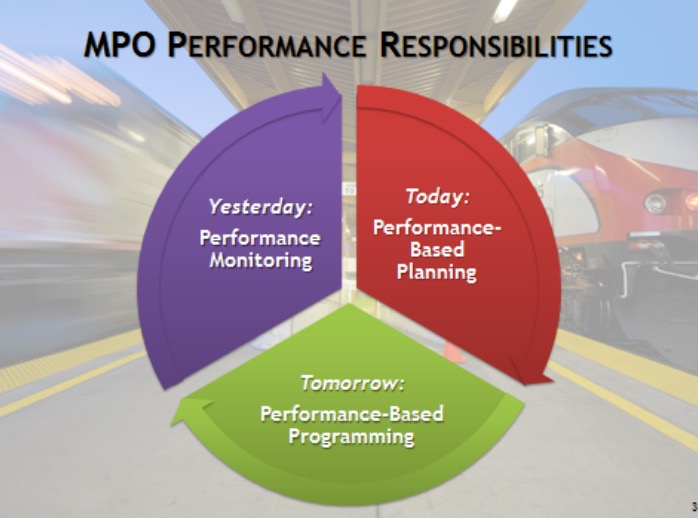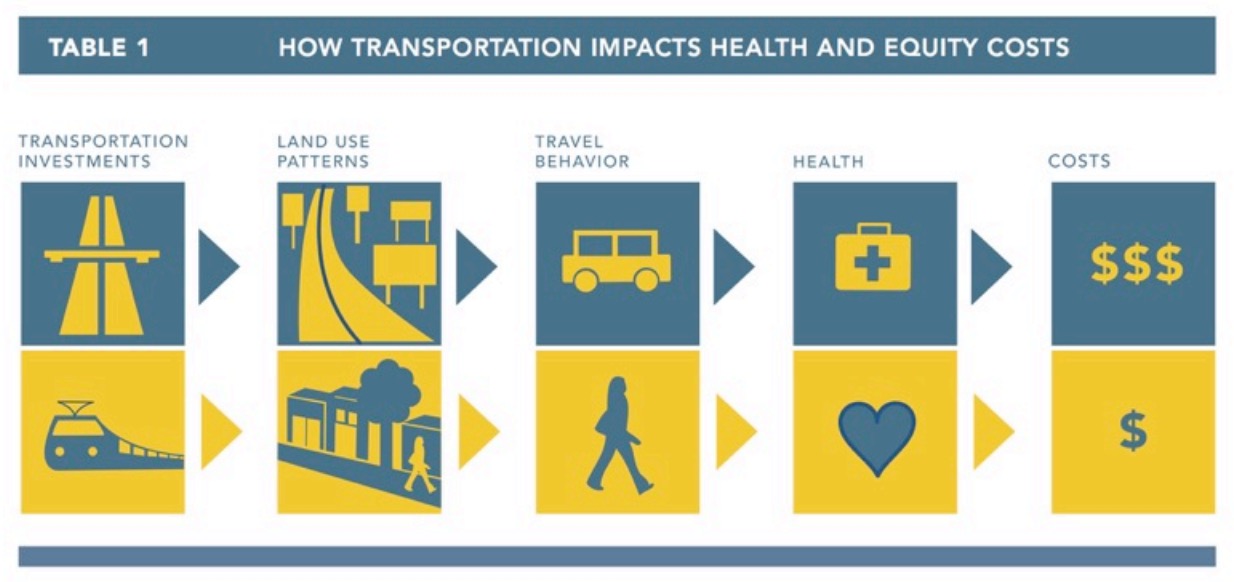TRANSPORTATION FOR AMERICA
Planning for a Healthier Future: Incorporating Health, Equity, and Environmental Performance Measures in Regional Transportation Plans
Introduction
Cities and regions around the country face important choices about how and where they want to grow, how to connect people to economic prosperity and how to use limited resources to promote healthy communities and provide a great quality of life for all of their residents.
Performance-based planning has emerged over the last decade as an effective way to evaluate the tradeoffs of land use and transportation decisions. Put simply, it allows stakeholders and decision-makers to understand how a given investment, policy, or decision “performs” across certain measures over time — providing more clarity and transparency on what state or regional transportation dollars are accomplishing.
When used effectively, performance measures can help metropolitan planning organizations (MPOs) and other regional agencies better identify policies and projects that support their goals, enable more comprehensive evaluation across multiple issue areas, demonstrate accountability and transparency, and communicate tradeoffs to stakeholders.
As we wrote in our report on performance measures in 2015:
Over the past 50 years, transportation agencies have focused on tracking a narrow set of goals — typically system condition, safety and sometimes traffic congestion. While these goals are important, they measure the state of the transportation system, not the impact of the system on people’s lives. People want to know that transportation funds are being spent in a way that creates value, supports long-term job growth, makes their communities more attractive to business and talent and will contribute to their economic health and resilience. They are looking for a transportation system that provides not just movement but safe, reliable, affordable access to necessities like jobs, education, health care and groceries. Measuring the impact of transportation investments in a way that resonates with the public is critical going forward.
And the benefits of a better process for measuring the performance of transportation investments are clear:
When used to engage the public and identify regional goals, performance-based decision-making can be game changing. …Performance-based decision-making allows transportation agencies to define the extent of current challenges, show what is possible at various funding levels and describe the trade-offs that might have to be considered. It can make the public a better partner to transportation agencies that need public support to fund the system. Transportation leaders can also better understand how much they can accomplish with current funds and how to get multiple benefits from one project.
The role of regional governance
MPOs and other regional agencies play a critical role in supporting these decisions by establishing policies to best achieve desired outcomes, convening decision-makers and stakeholders, and allocating resources for transportation projects and other large projects. Because of the significant costs and impacts of infrastructure investments, it is particularly important for regional organizations to better understand the benefits and consequences of their resulting investment decisions.
There are several ways that regional agencies can incorporate performance measures to enhance their decision-making process. Three common ways measures are used in planning include:
- Monitoring regional performance over time to track progress towards goals and set policies
- Evaluating proposed projects to understand project impacts and prioritize funding
- Comparing future scenarios of transportation networks and/or land use at the regional level (known as scenario planning)
The performance measures covered in this report can and should be easily adapted and used for multiple purposes.
Transportation directly influences the economy, health and equity of a region
Previous approaches to transportation performance measures have focused on traffic speed and quality of infrastructure. While these are important dimensions of transportation system performance, past experience has also shown the drawbacks of assessing transportation investments through such a narrow lens. Narrowly focusing on measures of the operation of a facility (transit line, roadway, trail) fails to address the many ways that the transportation system impacts people’s lives and the economy.
People’s choices are influenced by their experience, which includes availability of options to access destinations, travel distances, affordability, reliability and predictability of how long a trip may take, and time spent in travel. Measures and modeling techniques that broaden the scope of performance measures to capture these important details are becoming more commonplace.
Similarly, over the last 20 years, research has increasingly pointed to the relationship between transportation and two important domains: public health and social equity.
Download full version (PDF): Planning for a Healthier Future
About Transportation for America
www.t4america.com
Transportation for America is an alliance of elected, business and civic leaders from communities across the country, united to ensure that states and the federal government step up to invest in smart, homegrown, locally-driven transportation solutions. These are the investments that hold the key to our future economic prosperity.
Tags: Metropolitan Planning Organizations, MPOs, Public Health, T4America, Transportation for America








 RSS Feed
RSS Feed